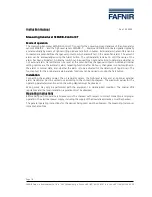
CCS Technical Documentation
Troubleshooting - Baseband
RH-34
Issue 1 11/2003 Confidential
©
2003
Nokia Corporation
Page 41
Charger faults
Charger
faults
Connect charger.
Make sure battery is
connected.
Battery bar doesn't
work (scroll)
Measure voltage
over V100. Is it > 3.0
Vdc?
Read BTEMP value.
Is it ~25C (0319)?
Remove (fuse) F100
and measure
current.
Is it ~850mA? Make
sure to use an ACP9
charger
Retest
Check X102, F100,
L100, V100, C106,
C110
Change UEM
Change UEM
Retest
NO
YES
NO
YES
NO
YES
NO
YES












































